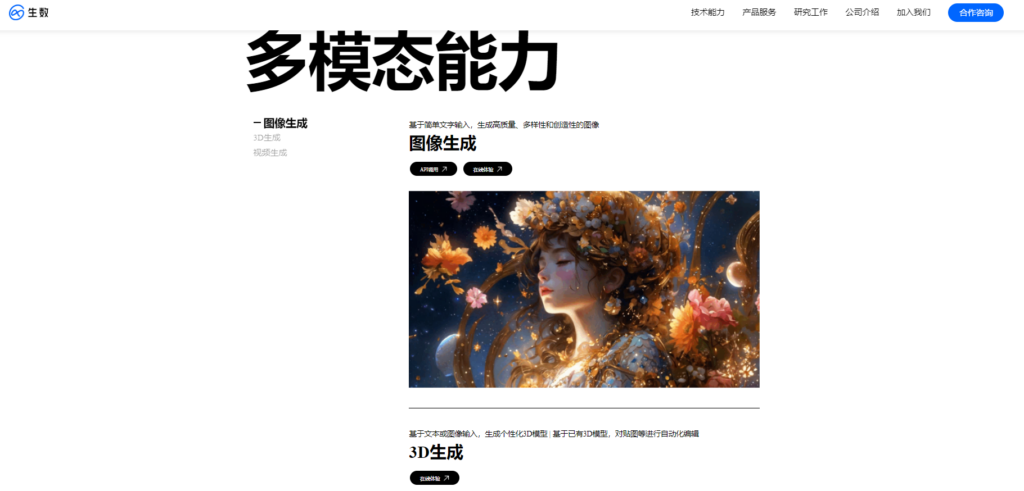In a groundbreaking development, China has unveiled , a powerful text-to-video AI model that is set to rival OpenAI’s Sora. Developed by Shengshu Technology in collaboration with Tsinghua University, was officially announced on April 27th, 2024, at the prestigious Zhongguancun Forum in Beijing. This cutting-edge AI technology has the potential to revolutionize the way we create and consume video content.
Vidu’s Impressive Features: High-Quality Video Generation and Multi-Camera Views
Vidu boasts an array of impressive features that make it a formidable competitor in the text-to-video AI space. Built on a Universal Vision Transformer (U-ViT) architecture, Vidu can generate high-quality 16-second videos at 1080p resolution with just a single click. While OpenAI’s Sora can produce longer 60-second clips, Vidu’s output remains remarkable, showcasing its ability to create videos with complex scenes, realistic lighting and shadows, and detailed facial expressions.
One of Vidu’s standout capabilities is its multi-camera view generation. The model can seamlessly transition between long shots, close-ups, and medium shots within a single scene, adding a dynamic and cinematic quality to the generated videos. This feature is made possible by the U-ViT architecture, which was developed by the Shengshu Technology team in September 2022, predating the diffusion transformer (DiT) architecture used by Sora.
Vidu’s Rich Imagination and Cultural Understanding
Another remarkable aspect of Vidu is its rich imagination and ability to create non-existent, surreal content with depth and complexity. The model can generate videos that adhere to real-world physics while also showcasing a creative flair that pushes the boundaries of what is possible with AI-generated content.
Moreover, Vidu demonstrates a unique understanding of “Chinese elements,” allowing it to generate culturally relevant content that resonates with Chinese audiences. This feature sets Vidu apart from other text-to-video AI models and highlights the importance of incorporating cultural nuances into AI development.
Accessing Vidu: A Simple Waitlist Process
For those eager to experience Vidu’s powerful text-to-video capabilities, accessing the technology is a straightforward process. Interested users can join the waitlist by filling out a form on Shengshu Technology’s website (). While the website is primarily in Chinese, using Google Translate can help navigate the form and request access to this cutting-edge AI technology.

The Future of Text-to-Video AI: Vidu’s Potential and Ongoing Advancements
Vidu’s launch represents a significant milestone in China’s AI research and development efforts. While side-by-side comparisons with Sora reveal that there is still room for improvement in terms of visual fidelity, Vidu’s temporal consistency and overall performance are commendable. As the technology continues to evolve and refine, it is exciting to imagine the possibilities that Vidu and other text-to-video AI models will bring to various industries, including entertainment, advertising, and education.
The unveiling of Vidu also highlights the ongoing competition in the AI space, particularly between China and the United States. As Chinese companies and research institutions continue to make substantial progress in AI development, it is clear that the global landscape of artificial intelligence is rapidly evolving. Collaborations between academia and industry, such as the partnership between Shengshu Technology and Tsinghua University, will play a crucial role in driving innovation and pushing the boundaries of what is possible with AI.
Looking ahead, the future of text-to-video AI is filled with promise and potential. As models like Vidu and Sora continue to advance, we can expect to see increasingly realistic and engaging video content generated from simple text prompts. This technology has the power to democratize video creation, making it more accessible to individuals and businesses alike.
Moreover, the development of text-to-video AI models like Vidu opens up new opportunities for creative expression, storytelling, and communication. As these tools become more sophisticated and user-friendly, they have the potential to transform the way we create and consume media, ushering in a new era of AI-powered content creation.
In conclusion, the launch of Vidu marks an exciting development in the world of text-to-video AI. With its impressive capabilities, rich imagination, and cultural understanding, Vidu is well-positioned to challenge OpenAI’s Sora and drive innovation in this rapidly evolving field. As we look to the future, it is clear that text-to-video AI will play an increasingly significant role in shaping our digital landscape, and models like Vidu will be at the forefront of this transformative technology.
